The conflict between Armenia and Azerbaijan over the Nagorno-Karabakh region is deeply rooted in historical, ethnic, and territorial disputes. Lasting for decades, it has sparked numerous violent clashes, including full-scale wars, resulting in significant casualties and displacement of populations on both sides. To understand the complexities of the conflict, it’s crucial to delve into its historical background, key events, underlying issues, and recent developments.
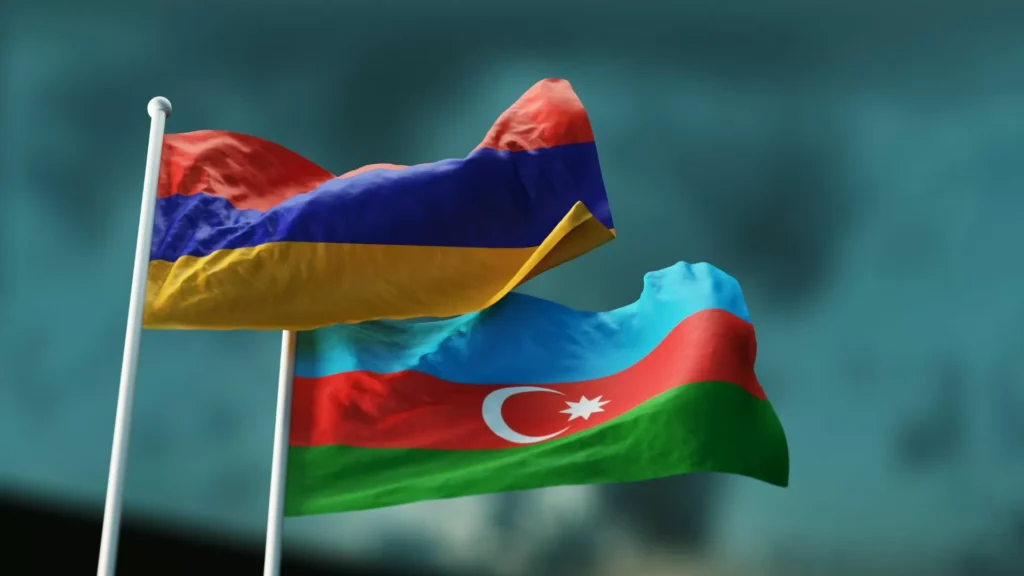
Historical Background:
The roots of the Armenia-Azerbaijan conflict trace back to the early 20th century when both countries were part of the Soviet Union. Nagorno-Karabakh, a predominantly ethnic Armenian region, was placed under the jurisdiction of Soviet Azerbaijan in the 1920s by Joseph Stalin. This decision was made despite the Armenian majority in the area and fueled tensions between the two republics.
The breakup of the Soviet Union:
The dissolution of the Soviet Union in 1991 provided the opportunity for the Nagorno-Karabakh conflict to escalate. As both Armenia and Azerbaijan gained independence, tensions over the region intensified, leading to open hostilities.
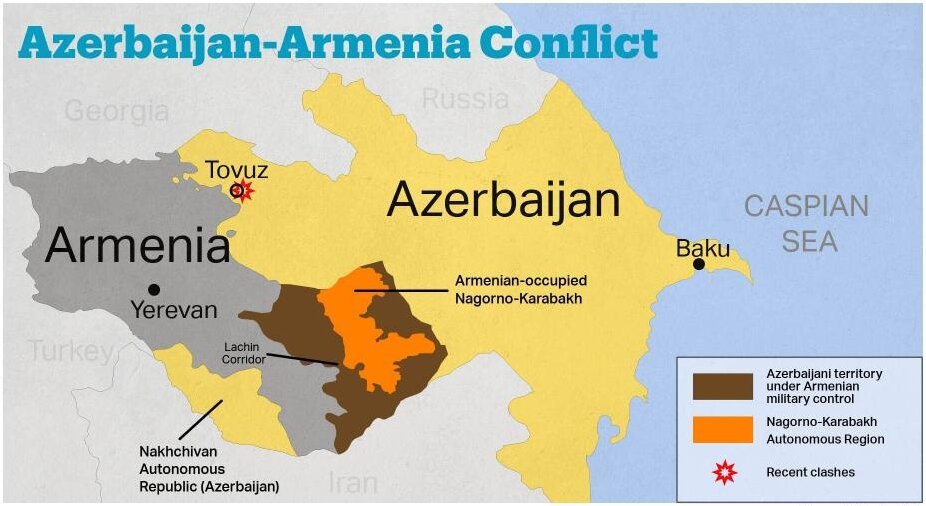
First Nagorno-Karabakh War (1988-1994):
The conflict erupted into full-scale war in 1988 when Nagorno-Karabakh declared its independence from Azerbaijan. Armenia supported the self-proclaimed republic, leading to a bloody war that lasted until 1994. The war resulted in significant casualties and displacement, with Armenians gaining control over Nagorno-Karabakh and several surrounding territories.
Ceasefire and Stalemate:
The war ended with a ceasefire brokered by Russia in 1994, but the underlying issues remained unresolved. Nagorno-Karabakh, despite being predominantly ethnic Armenian, was internationally recognized as part of Azerbaijan. This situation created a fragile ceasefire but failed to address the core territorial dispute.
Post-War Period and Attempts at Resolution:
Since the ceasefire, several international bodies, including the OSCE Minsk Group co-chaired by France, Russia, and the United States, have attempted to mediate a peaceful resolution. However, numerous peace talks and negotiations have failed to produce a lasting solution.
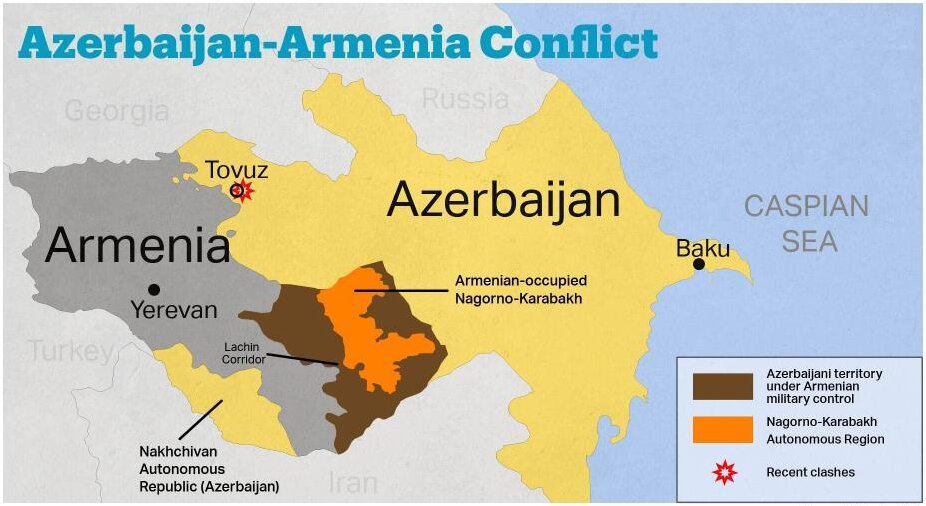
Renewed Hostilities (2020):
In September 2020, the long-standing ceasefire collapsed as both Armenia and Azerbaijan engaged in renewed hostilities over Nagorno-Karabakh. The conflict saw significant military escalation, including the use of heavy artillery, drones, and mercenaries. The fighting resulted in thousands of casualties and widespread destruction.
Intervention and Ceasefire:
International actors, including Russia and Turkey, became involved in the conflict, supporting their respective allies. Amid mounting international pressure, a ceasefire agreement brokered by Russia was signed in November 2020. The agreement, known as the “Moscow Declaration,” ended the active hostilities phase but left many unresolved issues.
Current Situation and Challenges:
As of [insert current date], the situation in Nagorno-Karabakh remains fragile. While the ceasefire has largely held, sporadic clashes and tensions persist along the Line of Contact. The status of Nagorno-Karabakh and the surrounding territories remains a contentious issue, with both Armenia and Azerbaijan claiming sovereignty over the region.
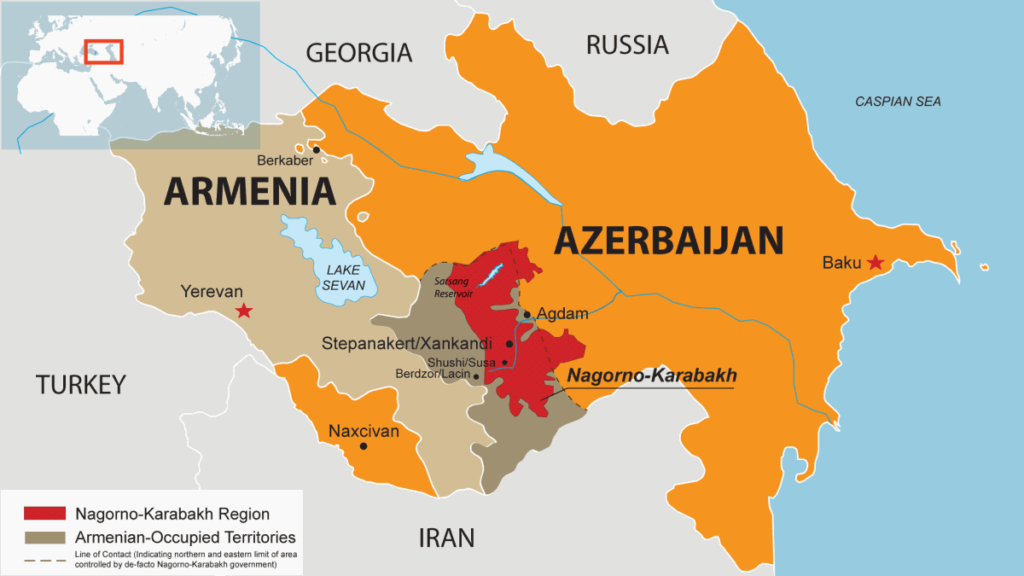
Humanitarian Concerns:
The conflict has had a devastating impact on the civilian population, leading to widespread displacement, loss of life, and humanitarian crises. Thousands of people have been forced to flee their homes, seeking refuge in makeshift shelters and neighboring countries.
International Response:
The international community has called for a peaceful resolution to the conflict and provided humanitarian aid to those affected. However, efforts to mediate a lasting solution have been hindered by geopolitical rivalries, historical grievances, and the reluctance of both sides to compromise.
Prospects for Peace:
Achieving a lasting peace in Nagorno-Karabakh remains a daunting challenge. Any resolution to the conflict must address the core issues of territorial sovereignty, the rights of displaced populations, and the security concerns of both Armenia and Azerbaijan. Sustainable peace will require genuine dialogue, compromise, and reconciliation between the parties involved, supported by the international community.
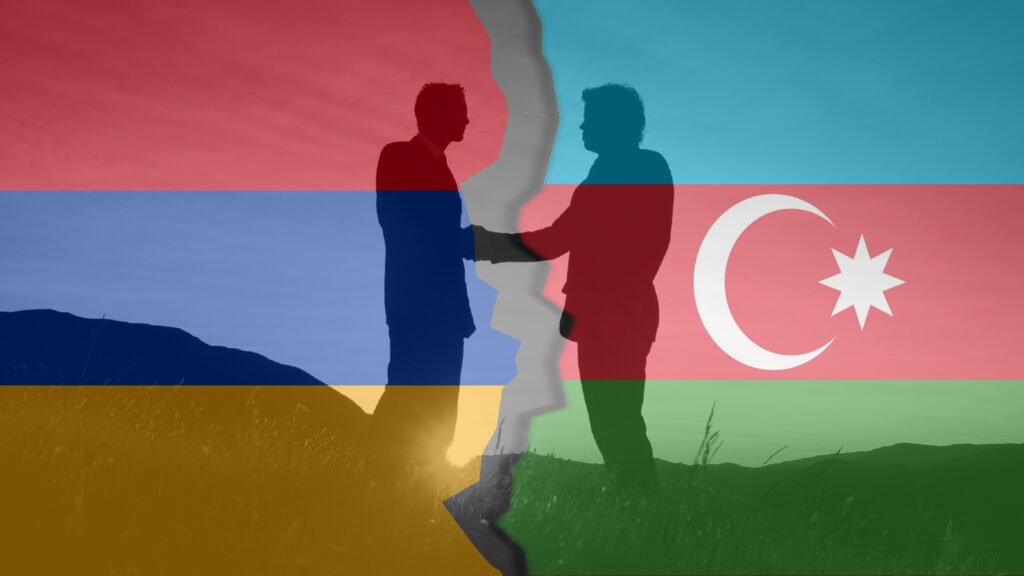
In conclusion, the Armenia-Azerbaijan conflict over Nagorno-Karabakh is a complex and long-standing dispute with deep historical roots. While efforts have been made to resolve the conflict peacefully, significant challenges remain, and the situation continues to pose a threat to regional stability and security. A comprehensive and inclusive approach, guided by principles of justice, mutual respect, and human rights, is essential to achieving a lasting peace in the region.
